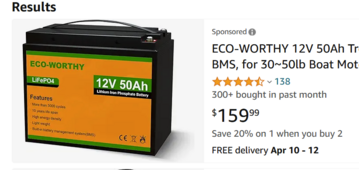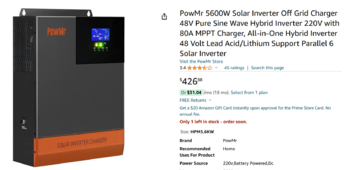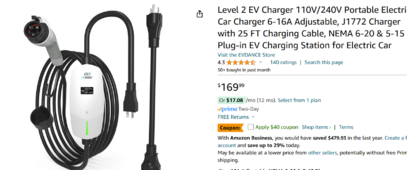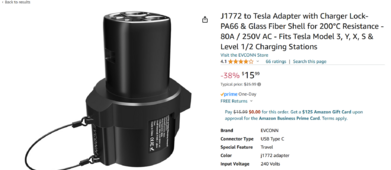Be mindful, I don't really think you are going to get much of an ROI, and outside the panels these purchases are not going to scale, thus I'd buy only TWO batteries. If you move up you will likely be throwing new money after experience earning money. In this scenario, having a spare 12v laying around is pretty much pointless if this is going to charge cars. Worst case is if something goes south down the road, you wait a few days for a less expensive battery or batteries, and you can't charge with solar for a short time.
I would strongly suggest a 48v system, and frankly something like the PowrMr 220v setup (Below) worked for me/will work just fine if wired correctly. I had FIVE(5) of them in parallel, (with a 100A/40A Auto-Transformer) and while they fell over starting my 4T A/C they had no problem at all charging the car, which is what I pre-tested with. Who knew the A/C that pulled 20A was worse than the EVSE that pulled 32A? If you are willing to buy THREE batteries, get FOUR, and a small inexpensive 220v 48v system. As time passes you can add an auto transformer (The Victron is not that expensive), if you want split phase output for playing around. You can also then simply add on to what you have, more panels, more batteries, and replace the inverter with something more robust. The batteries are going to set you back the most, I'd downsize the batteries if you need to save cash
View attachment 207137
160*4 = 640 for 48v@50AH, 2400W, mind your output amps.
This unit is 220-240v (settable), 240*6 = 1440W, should be kind of a minimum for car charging, would be great with about 2000W of panels, and
View attachment 207134
So 640 + 450 = $1100
Get a low end programmable EVSE, swap the cord, or you should already have the J1772 to Tesla, but ymmv
View attachment 207140
View attachment 207141
So $1100 + 200 = $1300 all in
That seems very doable, and very scalable with extra panels. I think it takes up to 500v on the MPPT.








